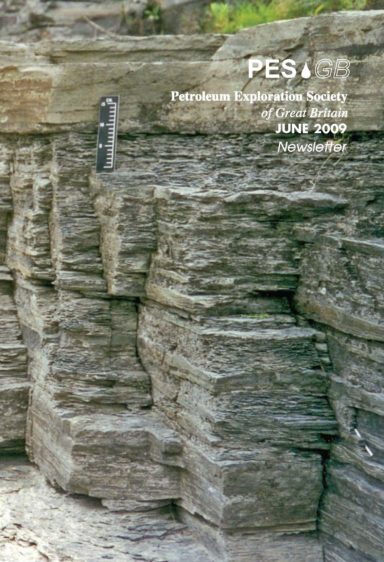PESGB June 2009
- Past President Reminiscences
- China
- Satrosphere
- BG Energy Challenge 20009
Plus much more inside
President’s Page- Jon Gluyas
“The next stop will be Stonehaven,” is the lyrical announcement as the early morning train draws out of Aberdeen station. The sun is shining brightly; the air is crisp as I begin a journey to Edinburgh. Later this morning I will be in the BGS core store working on core from one of our (Fairfield’s) North Viking Graben fields. Thus the Brent has yet to come. For now I can enjoy the spectacular coastline as the train weaves its way from bay to headland and I can catch glimpses of deeply weathered cliffs; Dalradian metasediments and of the occasional fairytale castle. Arrival at Stonehaven reminds me that we have crossed one of the major geological lineations in the British Isles – the Highland Boundary Fault. The next part of the journey will take us across the more gentle hills and red soils typical of the Old Red Sandstone.
Although the clickerty-clack has long since gone, the rhythmical nature of the train and warmth of the morning sun are relaxing and my mind begins to wander. How often I have stared out of train windows observing the rock strata in cuttings: the spectacular dune bedded Triassic sandstones on the approach to Liverpool Lime Street and the Devon Coast at Dawlish; the gritstone channel-fills bounding the line through the Peak District or the now grimy Chalk as the North Downs are breached by the LSWR’s line from Waterloo to Portsmouth. The dreamy nature of today’s journey reminds me further of April’s PESGB talk in Aberdeen.
Peter Wigley retold the story of William Smith and his map ‘from Fuller’s Earth to Google Earth.’ None of the comfort of a train for Smith, he read his landscape on foot and horseback. Smith may have been the pioneer but the stories are much the same over 200 years later. We geologists and geophysicists still read our landscape be it on the earth’s surface or from seismic data. What looks like chaos to the untrained eye has form and structure for us. We have in our toolbox the rules and laws of Walther and Hutton and the knowledge of stratigraphy bequeathed to us by Smith, de la Beche, Sedgewick, Murchison and others. And yet from time to time our tools become blunted and our skills require honing.
For many of us it is looking at rocks that helps sharpen our skill and allows us to challenge preconceptions and dogmas. Working with core, as I shall be doing later today, is one such way of seeing more rock. However, the one dimensional strip of core, no matter how detailed, is for me no substitute for seeing rock at outcrop. This is one of the reasons, along with the commands from membership, that the PESGB runs field trips. The classic locations of the UK have been the mainstay of PESGB trips over the years and these will remain so – watch out for the London building stones and Zechstein Field Trips later this year. However, in addition to the UK trips, the PESGB has taken the bold step of running a trip to Svalbard in July 2009; outcrop at its best and of direct relevance to those exploring for and producing petroleum in NW Europe. If you are quick we might just be able to find a space for you. And in keeping with the PESGB’s recent initiatives several student petroleum geoscientists will be joining us in the field – our colleagues of tomorrow. Have a good trip.


